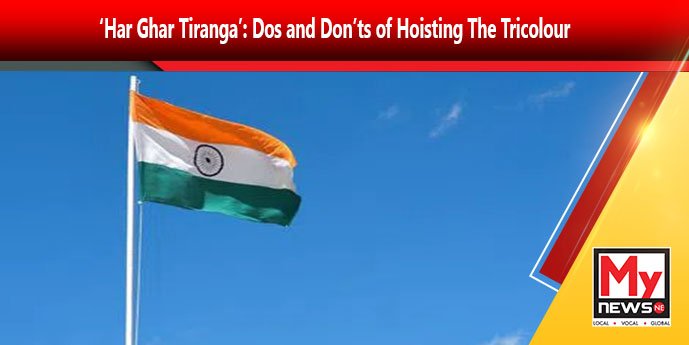‘Har Ghar Tiranga’: Dos and Don’ts of Hoisting The Tricolour
Guwahati: Guwahati is already awash in people flying the national flag outside of their homes, cars, and roadside stands as the “Har Ghar Tiranga” campaign officially began on Saturday,
The campaign aims under the auspices of Azaadi ka Amrit Mahotsav, tries to persuade Indian citizens to fly the tricolour flag at their residences. The promotion will continue through August 15 as part of the 75th Independence Day celebrations.
Since August, the city’s markets have been crowded with shoppers hurrying to purchase the tricolour flag in time for Independence Day.
However, with this patriotic spirit it is important to note the dos and don’ts of hoisting the national flag.
Where, who, when and how can we hoist the tiranga?
- The national flag can be hoisted on all occasions at all places without disrespecting its dignity and honour.
- Overruling clause XI of paragraph 2.2 of Part II of the Flag Code of India, where it was stated to unfurl the national flag after sunset only, the new rule states, “where the Flag is displayed in open or displayed on the house of the member of the public, it may be flown day and night.”
- It is to be noted that the person who is hoisting the flag to make sure the flag is not hoisted in inverted manner, which is the saffron part of the flag should fly high.
- Any person, organization or educational institution can hoist the flag on all occasions and days without any restrictions of time and day.
- The flag should not be flown on any vehicles except on the vehicles of dignitaries such as President, Vice-President, Prime Minister, Chief Ministers, or others who hold high honorary places. However, it is witnessed that many people display the flag on their vehicles without being aware about the restrictions.
Size and material of the displayed Flag
- The Flag can be of any size but its ratio of length to height must be 3:2 in the rectangular shape.
- The Flag Code of India, 2002 was amended vide Order dated 30st December, 2021 and National Flag made of polyester or machine-made Flag have been allowed. Now, the National Flag shall be made of hand spun and hand woven or machine made, cotton/polyester/wool/silk khadi bunting.
What should be done if the Flag gets damaged?
- The flag displayed should not be damaged or faded and that it should not touch the ground or water. However, in case the flag is damaged then it should be destroyed in a manner that it may hurt its dignity or honour.
- According to the flag code, it should be completely destroyed in private by burning it; and if it is paper-made, make sure that it’s not abandoned on the ground.
This code was changed to let people to put up signs in the open and on specific homes and buildings during the day and night.
Prior to 2004, the Indian flag was only flown on designated occasions. However, this began to change after the Supreme Court of India issued a landmark decision in 2004 declaring that the right to fly the national flag with respect and dignity is a “fundamental right of an Indian citizen” as defined by Article 19(1)(a) of the Indian Constitution.

